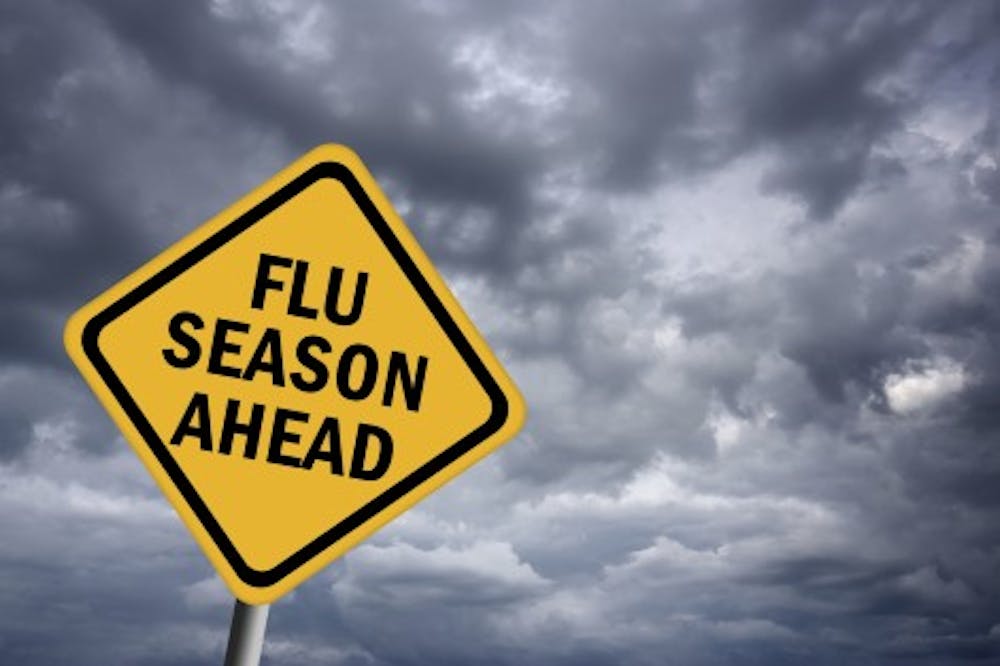By ELIZABETH LIU
According to the U.S. Centers for Disease Control and Prevention (CDC), the seasonal flu can cause more than 200,000 complications and hospitalizations per year. Not surprisingly, many people elect to get seasonal vaccines each year. While these yearly flu shots offer some protection against the flu, subtypes of the virus that were not present in the vaccine can infect even those who have gotten the flu shot.
However, that may soon change as researchers from The Scripps Research Institute (TSRI) and the Janssen Pharmaceutical Companies of Johnson & Johnson have discovered a way to induce effective immune responses to a variety of influenza subtypes in animal models.
Vaccines typically consist of dead or modified microbes that are tagged with antigens, a marker that our immune system uses to identify foreign microbes. When injected with these microbes, the body reacts by creating proteins called antibodies. These specific antibodies bind to the antigens present on the dead viruses and help remove the foreign microbes from the body.
Once the microbes are removed, the immune system will “remember” how to fight them — the same antibodies will be on standby in the bloodstream, protecting the body in case there is a reinfection. By imitating an infection, vaccines help the body prepare for future viral infections and are a safe and effective way to prevent many serious diseases.
However, viruses are constantly changing, which pushes researchers to develop better vaccines to counteract the changes. Every year scientists have to predict the outcome of the seasonal flu virus months in advance and create a vaccine to protect against it. The recent research from TSRI and Janssen may be a crucial step forward in the search for a universal flu vaccine.
Previously, scientists from TSRI, Janssen and other institutes discovered that certain people after being infected with influenza can create powerful antibodies that target many different subtypes of the virus by recognizing sites on the virus that have relatively low mutation rates. These special antibodies, called broadly neutralizing antibodies (bnAbs), are quite rare. Researchers from TSRI and Janssen, however, decided to try to elicit bnAbs using vaccines.
In their study, the scientists chose to target hemagglutinin (HA), a protein found on the surface of all subtypes of influenza. HA plays an essential role by enabling the virus to enter a cell — the “stem” region of HA actually connects the virus to the cell. Since HA has such a crucial role, it is unlikely that a mutation would occur in the stem region.
The researchers then created a synthetic version of the HA stem by removing the variable head region of HA and stabilizing the conformation of the resulting protein. The structure and stability of the proteins were observed using electron microscopy and x-ray crystallography. The researchers then proceeded to produce different variations of the vaccine and test them in rodents and nonhuman primates. They found that given a specific variation the animal models were able to successfully produce bnAbs to fight off many different influenza subtypes including H5N1 viruses (also known as bird flu).
H5N1 is a highly-pathogenic form of avian flu, which infects domestic poultry. Since 2003 there have been around 650 reported cases of humans being infected with the H5N1 virus and about 60 percent of those infected died. In addition to this disease, the swine flu (H1N1) virus outbreak in 2009 killed a reported 151,700 to 575,400 people worldwide. Diseases like these are the reason that scientists are on the search for a better flu vaccine.
The scientists are currently looking into holding clinical trials to determine whether the vaccine elicits the same response in humans.





